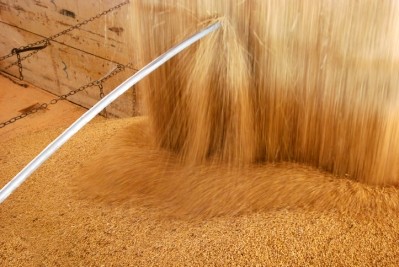US poultry producers want corn use curbed in biofuel

The proposed ethanol volumes, coupled with the recent waiver that will increase the use of E15, a blended fuel that includes 15% ethanol and 85% gasoline, in the US, are overly aggressive, and too reliant on corn-based ethanol, stressed the NCC.
The corn market is still uncertain and volatile given the supply and demand situation, yet the EPA has set conventional ethanol volume at the statutory maximum, said the Council.
It is also frustrated that the EPA has already added more potential volatility given its waiver under the Clean Air Act (CAA) to allow the year-round use of E15 in finished motor fuel, which the NCC claims has the potential to utilize an amount of corn ethanol that exceeds the statutory maximum.
The Council, in a series of comments submitted to the EPA, said the agency has not evaluated the effect that the E15 waiver will have on the feed and livestock production industry.
Widespread use of E15 could increase ethanol production by about 50% or account for more than 2bn bushels, a spokesperson for the NCC told FeedNavigator.
“When ethanol mills buy corn to fulfill the federal mandate for ethanol use, they have a built-in advantage over chicken producers,” he said. “Ethanol producers can bid up prices because they can more easily pass on the costs to motorists because of the mandatory use of ethanol.”
“There is no federal mandate to eat chicken,” he added.
The National Chicken Council (NCC) represents companies that produce and process more than 95% of the chicken in the US.
It cited data from agricultural economic research and analytical firm, PRX, that shows the US poultry sector, of which of which broiler production is by far the largest component, comprises the largest single user of corn not operating under the protection of the Renewable Fuel Standard (RFS).
The PRX data shows that, since 2007, under the RFS, broiler producers have faced $68.5bn in higher feed costs for the production of broiler meat, said the NCC.
When breeders and pullets are factored in, the cost is dramatically higher, said the NCC. As corn users, therefore, it said its members are substantially impacted by the RFS and its impacts on the corn market and feed supply.
The proposed volumes, especially conventional ethanol, should be reduced in the final rule to more accurately reflect the availability of feedstock and the usage rate of biofuels, said the NCC.
On two separate occasions, in 2008 and again in 2012, chicken producers were denied protection from the impact of the RFS mandate during times of market volatility – this cannot happen a third time, said the Council.
The Renewable Fuel Standard (RFS) is an American federal program that requires transportation fuel sold in the US to contain a minimum volume of renewable fuels. It originated with the Energy Policy Act of 2005 and was expanded and extended by the Energy Independence and Security Act of 2007.
NCC is asking for the volume of conventional biofuel to be reduced because the 15bn gallons target set is more than is used in the domestic market, the NCC spokesperson said.
“A 15bn gallon mandate is an aspiration for the ethanol industry,” he said. “It is not a reflection of the domestic retail motor fuel market.”
In 2017, about 14.5bn gallons of conventional biofuel were used by domestic drivers, while, in 2018, about 14.4bn gallons were used, said the NCC. It is asking for the EPA to “set the 2020 mandated volumes for ethanol at what is a realistic and proven level of use,” according to the NCC spokesperson.
The chicken industry representatives are also requesting that the EPA use its 'off-ramp' waiver authority, which allows the EPA – in consultation with the US secretary of agriculture and the US secretary of energy – to waive the set volume of biofuel production if producing that much fuel would cause “severe economic harm".
“We are proposing that the off-ramp – if necessary – would be triggered when the corn stocks-to-use ratio dips below a certain percent based on the June WASDE,” the spokesperson said. “June is when corn planting determines the outlook for the coming crop marketing year.”
“We are only asking that this off-ramp apply as a partial year wavier,” he added.
Corn volatility and feed costs
The use of corn in ethanol production has increased volatility during shortages, claimed the Council.
This year there is added concern about volatility in the US corn market, the spokesperson said.
“Based on its latest estimates, USDA is projecting a corn crop that is 600 million bushels less than the 2018 crop."
“This is still a late corn crop, and it is more likely to face further revisions downward,” he said. “There is industry consensus that the October USDA estimates will again reduce the crop estimate further.”












